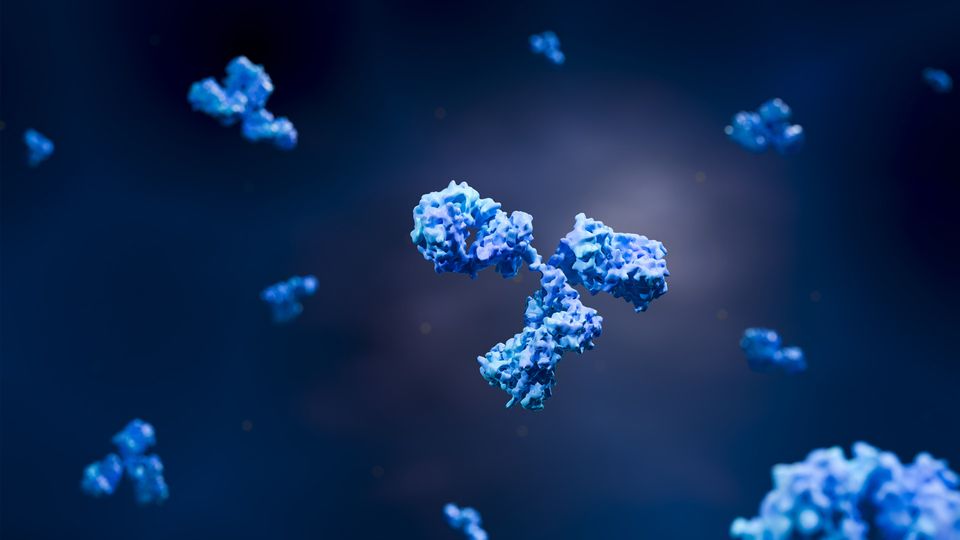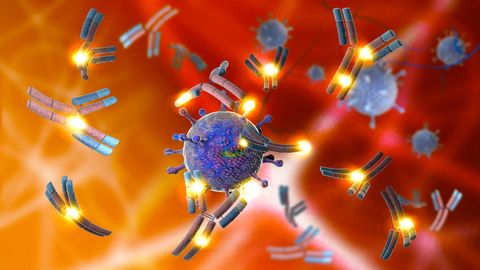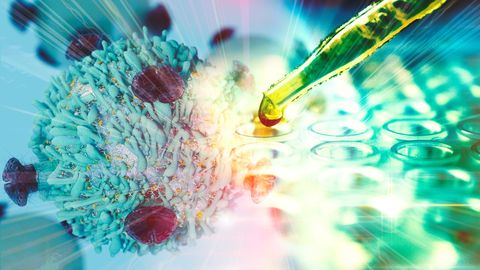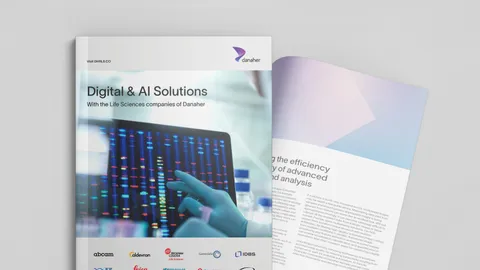Antibody Screening Innovations: Affinity and Beyond
New tools and AI are redefining antibody screening to go beyond affinity and uncover developable, high-function candidates faster than ever.

Complete the form below to unlock access to ALL audio articles.
Identifying promising therapeutic antibodies is like panning for gold, but new experimental and computational approaches are accelerating the field. In this article, we explore some of the latest screening technologies and highlight how machine learning and artificial intelligence (AI) could soon transform antibody discovery.
Increasing antibody screening throughput
Traditional approaches for antibody screening have largely focused on phage or yeast display technologies that present antibody repertoires to a target antigen and provide a read-out as to whether the antibody binds or not. But despite its success, this method comes with limitations when it comes to identifying antibodies with therapeutic potential.
“The problem with phage and yeast display methods is they can introduce bias,” said Dr. Philipp Holliger, program leader at the MRC Laboratory of Molecular Biology (LMB) in Cambridge, UK. “Some antibody genes are slightly toxic and don’t propagate well, or the translated proteins may not fold properly within these systems. When you start selecting through multiple cycles of screening, these biases are amplified.” The result? You isolate an antibody that is a compromise between what you were screening for, and one that keeps your host cell happy.
As part of the LMB’s Blue Sky Collaboration with AstraZeneca, Holliger and colleague Dr. Ben Porebski have developed an ultra-high throughput “deep screening” method for the discovery of antibodies and other biological therapeutics.1
“The deep screening approach is conceptually different,” said Holliger. “If you imagine panning for gold, instead of sifting through for nuggets, now we just simply spread out the sand.”
Deep screening takes advantage of the throughput of next-generation sequencing platforms that can display up to two billion antibody genes individually on a single chip.1 Each antibody gene is captured and amplified into a cluster of approximately a thousand identical DNA molecules, which are then converted into an RNA array. Next, using state-of-the-art polymerase engineering and in vitro translation methods, each RNA cluster produces and displays its corresponding antibody.1
“We designed the RNA such that the ribosome stalls just before the end of translation, resulting in a complex of RNA attached to the chip to the ribosome,” explained Holliger. “This leaves the nascent antibody chain, which has exited the ribosome, displayed on the chip. The key difference is you’re combining ribosome display with the throughput of array technology.”
The power of the approach arises from its combinatorial diversity, enabling you to investigate millions of distinct antibodies simultaneously and study binding equilibrium, kinetics and specificity. Moreover, by injecting different antigens, or a related antigen from mouse or cynomolgus monkey, for example, you can study cross-reactivity early in the discovery process. But Holliger and colleagues also found another surprising benefit.
“In a cell translation system, antibodies have a whole army of cofactors that aid antibody expression and folding, but in our stripped-down system, if they can’t make it on their own, we won’t see their expression in the assay,” he explained. “We thought this might be a problem, but it turns out to be a benefit. The resulting antibodies have excellent developability properties – they are well expressed and optimally folded.”
Predicting form and function
The requirement to identify developable antibodies is not only limited to their biophysical properties, but increasingly, screening methods are being developed to measure functions such as virus neutralization, T-cell engagement or receptor antagonism or agonism.
“The challenge is it’s relatively easy to measure something but often very hard to deduce meaningful parameters from it,” said Dr. Klaus Eyer at Aarhus University, who is developing microfluidic droplet-based functional antibody screening and characterization methods. “In our case, every droplet is like its own microreactor in some way, so the functional assay needs to be really standardized, controlled and optimized to pick up the few hits you want to find reliably due to the high throughput nature of the screens.”
One of the considerable advantages of microfluidics-based antibody screening is the small volume, which means you can quickly analyze antibodies at a measurable concentration. “When you screen for high-affinity antigen-specific binders, you’re potentially looking for a few hundred hits among millions of antibodies, so if the concentration is too low, you may never detect them,” said Eyer.
At the Massachusetts Institute of Technology, Dr. Brandon DeKosky is also focused on microfluidic functional screens. “One of the things we’re focused on is developing high throughput screening technologies that collect information beyond affinity,” he said. “We have found a very efficient way to use reporter lines and secreting cell lines, so that it is possible to break the emulsion droplets and still connect the function with the sequence tag.”
The new method means that in just a few milliliters, you can have millions of single cells, with each being evaluated for its own functional property. The team has tested the approach, called Droplet Reporter Cell Testing for Neutralization (DrReCT-Neutralization), to screen antibody gene libraries for their ability to neutralize viral infections, and recently shared the results as a preprint.2
“The other aspect that’s really important about these systems is we are able to screen for native soluble drug function,” DeKosky added. “In affinity-based screens, it’s often necessary to screen based on a Fab or scFv fragment, but that can lead to functional issues when it is reformulated as a final soluble drug.”
Eyer adds that another challenge is the quality of your antigen. “I think conceptually there’s a problem that most of the time we screen against a single recombinant antigen that might be different from naturally occurring antigens, introducing a bias,” he explained. This might already be an issue if you are screening for a therapeutic antibody against normal and disease antigens, but it’s an issue that might be further amplified in viral antigens that evolve rapidly, meaning that even if the screening step is rapid, by the time an antibody reaches the market it might no longer be relevant. “We are currently working on how we can introduce an antigenic spectrum instead of a single antigen in our screenings.”
Prioritization and prediction
The next significant challenge in antibody screening is the prioritization of hits. Imagine you screen an antibody repertoire and get a few thousand sequences of interest – the new bottleneck is how to select the clones you want.
AI and bioinformatics will take care of this, predicts Eyer. “Candidate selection is the perfect problem for AI – dealing with a large number of sequences and huge amounts of data,” he said. “But there are some limitations, because not all antibody functions are linked to sequence alone.” Indeed, Eyer’s lab recently published a paper showing that antigen density was a crucial factor influencing the activation of complement by different antibodies, a factor unrelated to antibody sequence.3
However, it’s possible that AI tools could soon learn about the link between sequence and function. “One of the most important features of the deep screening method is that it provides a real-time snapshot of how sequence and function are related at a very large scale and measured in an internally consistent manner,” said Holliger. “This makes it well suited as an input for machine learning, because even the most well-performed experiments still have differences in the data, instrumentation and noise.”
To realize AI’s full potential, data diversity will be as important as quality. “One of the advantages of using AI is you can ask the algorithms to consider multiple properties simultaneously,” DeKosky explained. “Experiments are good for testing one property, but AI can take disparate single data sets and combine them for optimization based on many parameters.”
Such parameters might include developability, secretion potential, manufacturing titers, off-target activity, on-target activity, cross-species reactivity and immunogenicity. These are all factors you can collect separate data for, but it’s hard to collect in a single consistent environment.
In the future, Holliger envisions a world where you will no longer need to screen de novo for antibodies. “I think deep screening combined with in silico design, where you start with a number of designs, screen them at scale and then feed the data back into the system, will be very important within an intelligent system that can tell you right from scratch which antibodies will work with different targets,” he concluded.
References
1. Porebski BT, Balmforth M, Browne G, et al. Rapid discovery of high-affinity antibodies via massively parallel sequencing, ribosome display and affinity screening. Nat Biomed Eng. 2024;8(3):214-232. doi: 10.1038/s41551-023-01093-3
2. Gutierrez-Gonzalez M, Fahad AS, Delley CL, et al. High-throughput antibody neutralization screening in massively parallel droplet arrays. bioRxiv. 2025.01.31.635965; doi: 10.1101/2025.01.31.635965
3. Aymerich N, Schlotheuber LJ, Bucheli OTM, Portmann K, Baudry J, Eyer K. Antibody density on bacteria regulates C1q recruitment by monoclonal IgG but not IgM. Eur J Immunol. 2024;54(11):e2451228. doi: 10.1002/eji.202451228








